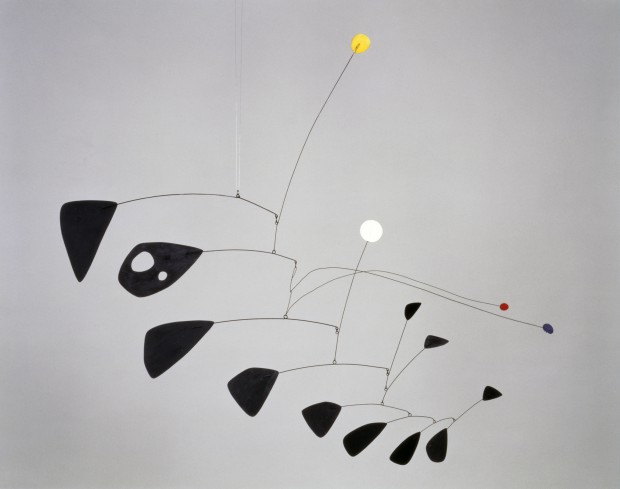One day, in October 1930, Alexander Calder visited the great abstract painter Piet Mondrian in his apartment in Paris. The Dutch artist had turned this small space on rue du Départ, which also doubled as his studio, into a walk-in work of art. Even his gramophone, painted bright red, had become a note of pure form and colour.
Calder was impressed by the squares and oblongs of the pictures all around. But he also asked a question: wouldn’t it be fun to make these rectangles move? With a perfectly straight face Mondrian replied that this wasn’t necessary: ‘My paintings are already very fast.’
As I walked around Performing Sculpture, the new Calder exhibition at Tate Modern, I mused on which of them had got the better of this exchange. In a free-association test, any art buff prompted with the word ‘Calder’ would immediately respond ‘mobile’. This is because his distinctive contribution to modernism was to make abstract sculpture move.
Naturally, the galleries at Tate Modern are full of Calder’s mobiles: suspended from the ceiling, rising on filigree arrangements like inverted coathangers from the floor. Quite often, if not quite always, they are indeed in motion, gently revolving on currents of air from vents in the floor or the mild jetstream caused by critics walking past, notebooks in hands. It does not take much to make the mobiles stir, but visitors are strictly warned against doing so by touching them — or even blowing in their direction.
Worries about conservation have immobilised quite a few of the pieces in this exhibition. There are early sculptures equipped with home-made-looking mechanisms or hand-operated handles. Sadly, these amusing toys have grown too fragile, valuable and art-historically important to flap or wave as their creator intended.
Others have been silenced.









Comments
Join the debate for just £1 a month
Be part of the conversation with other Spectator readers by getting your first three months for £3.
UNLOCK ACCESS Just £1 a monthAlready a subscriber? Log in